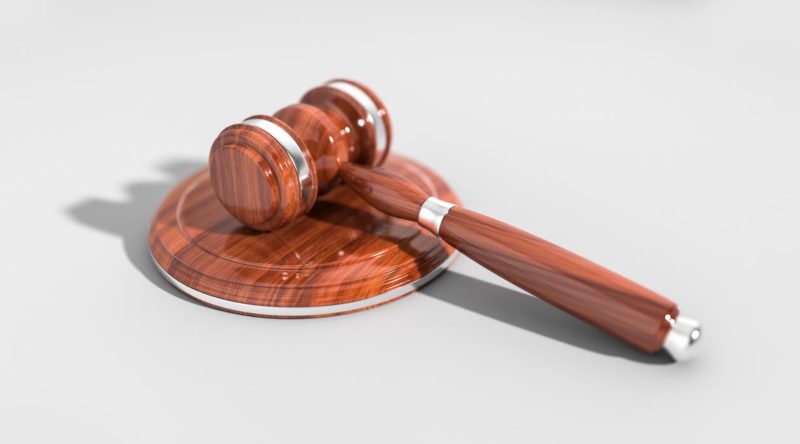
By Edward McIntyre
California’s new Rules of Professional Conduct went into effect November 1, 2018. This article will examine some of the ethical considerations of Rule 1.5 (Fees for Legal Services) and discuss some of the best practices for compliance.
As an experienced trial lawyer mused years ago, “If you practice long enough, try enough cases, it’ll happen to you. No one’s immune.”
What will happen? You will learn, often when it’s too late, that a witness you called or a client who testified did not tell the truth. Intentionally. And think they got away with it — the other lawyer, the court, the jury, even you didn’t catch on.
If the sage quoted above is correct—experience suggests he is—the new and revised Rules of Professional Conduct, effective November 1, will complicate our lives with ethical obligations new to California lawyers. For example, rule 3.3 (“Candor Toward the Tribunal”) not only reiterates duties we’ve observed all along, but it imposes ethical requirements California lawyers have not seen before.
First, the rule reminds us that we cannot knowingly make a false statement of fact or law to a tribunal (rule 3.3(a)(1) or fail to disclose controlling authority or knowingly misquote a book, statute, decision or other authority (3.3 (a)(2)). Nothing surprising there.
But then, not only does the rule prohibit a lawyer from offering evidence the lawyer knows to be false (rule 3.3 (a)(3)), but specifically addresses the lawyer’s ethical duty when, after the fact, a lawyer learns that either the lawyer’s client or a witness the lawyer called offered materially false evidence. The lawyer must take “reasonable remedial measures, including, if necessary, disclosure to the tribunal,” unless the lawyer’s confidentiality obligation to the client under Business and Professions Code section 6068, subdivision (e) and rule 1.6 prohibit that disclosure.
Let’s examine the different examples the rule mentions. First, a lawyer learns, after the fact, that a non-client witness whom the lawyer called gave materially false testimony, or produced materially false evidence, either at trial or a deposition or any other proceeding conducted under a tribunal’s authority. Section 6068(e) and rule 1.6’s confidentiality obligations do not apply because the witness is not the lawyer’s client.
What constitute “reasonable remedial measures?” Have the witness correct the false testimony, where possible; withdraw the false evidence, if permitted; explain to the client the lawyer’s obligation to inform the tribunal if the witness does not correct the false testimony or evidence; remind the client about the lawyer’s obligation to withdraw from the representation if the lawyer knows or reasonably should know that continuing the representation will result in a violation of the rules or the State Bar Act (rule 1.16(a)(2)) or reasonably believes that continued representation is likely to result in such a violation or even is criminal or fraudulent (rule 1.16 (b)(9), (2) or (3)). In any circumstance, the confrontation with the witness and the client, whom rule 1.4 requires the lawyer to inform, will — at a minimum — be uncomfortable. More likely, client resistance to “remedial measures” will be strong; defiant, even.
But if the client testified falsely or produced materially false evidence, section 6068(e) and rule 1.6—sweeping in the scope of the confidentiality obligation and allowing of almost no exception—prohibit disclosure of the client’s false evidence to the tribunal. What then, if the client resists all efforts to convince the client to “correct” the “mistaken” testimony? Assume the court denies a request to withdraw—section 6068(e) prohibiting disclosure of the real reason for seeking withdrawal.
Reasonable remedial measures likely include not arguing the false evidence to the finder of fact; not using it in any further court proceeding, including appeal. Would such measures, however, also include structuring examination of other witnesses to call the false evidence into question? Or does the duty of loyalty to a client trump this aspect of the duty of candor to a tribunal?
Can the lawyer heave a sigh of relief if she or he learns of the falsity after the proceeding has ended? No. The rule’s obligations continue until the matter is final on appeal or until the time for appeal has run.
In addition, rule 5.1 (“Responsibilities of Managerial and Supervisory Lawyers”) require both firm managers and lawyers having direct supervisory responsibility of another lawyer to make sure that the firm has measures in effect to ensure that its lawyers, and that the supervised lawyer or lawyers, comply with the rules and State Bar Act (rule 5.1(a) & (b)). More importantly, if a manager or supervisor knows of another lawyer’s conduct that constitutes a violation of the rules or State Bar Act “when its consequences can be avoided or mitigated but fails to take reasonable remedial action,” that manager or supervisor can be held vicariously responsible for the other lawyer’s ethics violation (rule 5.1(c)).
Thus, with respect to the extended candor obligations of rule 3.3, law firm managers and direct supervisors, who learn another firm or supervised lawyer has discovered false evidence from a witness or client and is not taking “reasonable remedial measures,” have the obligation to do so or face personal ethical jeopardy. Similarly, the obligation to take reasonable remedial action applies to knowledge of another lawyer’s conduct that violates another provision of rule 3.3’s candor obligations.
What will the State Bar, the State Bar Court or other California courts determine are “reasonable remedial measures” in the circumstances of false testimony or evidence? We do not know. But the new obligations are far reaching, and one might expect courts, which depend on lawyer candor, to be less lenient—likely, more strict—when they have to address these issues.
Edward J. McIntyre is a professional responsibility lawyer and co-editor of San Diego Lawyer.
**No portion of this summary is intended to constitute legal advice. Be sure to perform independent research and analysis. Any views expressed are those of the author only and not of the SDCBA or its Legal Ethics Committee.**
This article was originally published in the SDCBA’s “Ethics in Brief” column series.